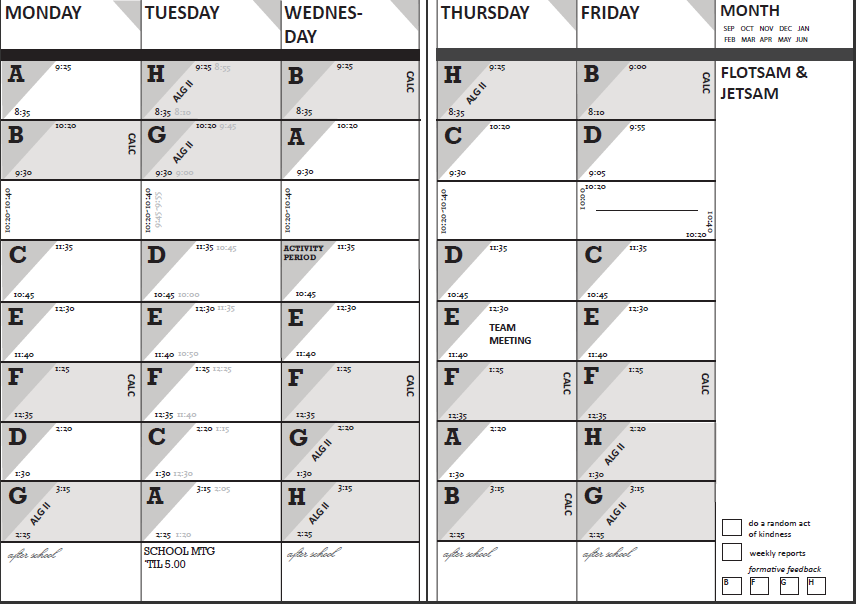This one is for Max, who asked about it on Twitter, and for Ashli, who interviewed me for her Infinite Tangents podcasts.
As Ashli and I were talking about some of the struggles we see as young adolescents make the transition from concrete thinking to abstraction, I mentioned substitution.
For many learners, there comes a point in their journey when abstraction shows up as a very polite ladder to be scaled. But for others (and I count myself among this number), abstraction showed up as the edge of a cliff looking out over a giant canyon chasm. A chasm without a bridge.
This chasm appears whenever students need to apply the substitution property of equality — namely, the principle that if one algebraic expression is equivalent to another, then that equivalence will be durable enough to withstand the seismic shift that might occur if one were asked to make it in order to solve a system of equations.
Here is how I have tinkered with the concept and procedures.
Most kids understand the idea that a dollar is worth one hundred cents and that one hundred cents is equivalent to the value of one dollar. I would characterize this as a robust conceptual understanding of the ideas of substitution and of equivalence.
One dime is equivalent to ten cents. Seventy-five pennies are equivalent to three quarters. You get the idea.
We play a game. "I have in my hand a dollar bill. Here are the rules. When George's face is
up, it's worth one dollar. When George is face
down, it's worth one hundred cents. Now, here's my question."
I pause.
"Do you
care which side is facing up when I hand it to you?"
No one has yet told me they care.
"OK. So now, let's say that I take this little green paper star I have here on the document camera. Everybody take a little paper star in whatever color you like."
Autonomy and choice are important. I have a student pass around a bowl of brightly colored little paper stars I made using a Martha Stewart shape punch I got at Michael's.
Everybody chooses a star and wonders what kind of crazy thing I am going to have them do next.
We consider a system of equations which I have them write down in their INB (on a right-hand-side page):
We use some noticing and wondering on this little gem, and eventually we identify that
y is, in fact, equivalent to
11x – 16.
On one side of our little paper star, we write "
y" while on the other side, we write "
11x-16":
I think this becomes a tangible metaphor for the process we are considering. The important thing seems to be, we are all taking a step out over the edge of the cliff together.
We flip our little stars over on our desks several times. This seems to give everybody a chance to get comfortable with things. One side up displays "y." The other side up displays "11x–16." Over and over and over. The more students handle their tools, the more comfortable they get with the concepts and ideas they represent.
Then we rewrite equation #1 on our INB page a little bigger and with a properly labeled blank where the "y" lived just a few short moments ago:
"Hey, look!" somebody usually says. "It looks like a Mad Lib!"
Exactly. It looks like a Mad Lib. Gauss probably starts spinning in his grave.
"Can we play Mad Libs?" "I love Mad Libs!" "We did Mad Libs in fifth grade!" "We have a lot of Mad Libs at my house!" "I'll bring in my Mad Libs books!" "No, mine!"
It usually takes a few minutes to calm the people down. This is middle school.
I now ask students to place their star
y-side-up in the blank staring back at us.
Then it's time to ask everybody to buckle up. "Are you ready?"
When everybody can assure me that they are ready, we flip the star. Flip it! For good measure, we tape it down with Scotch tape. Very satisfying.
A little distributive property action, a little combining of like terms, and our usual fancy footwork to finish solving for
x.
Some students stick with substitution stars for every single problem they encounter for a week. Maybe two. I let them use the stars for as long as they want. I consider them a form of algebraic training wheels, like all good manipulatives. But eventually, everybody gets comfortable making the shift to abstraction and the Ziploc bag of little stars goes back into my rolling backpack for another year.
-----------------------
I'd like to thank the Academy and Martha Stewart for my fabulous
star puncher, without which, this idea would never have arisen.
I wore out my first star puncher, so I've added a link above for my new paper punch that works much better for making substitution stars. Only
eight bucks at Amazon. What's not to like? :)



















